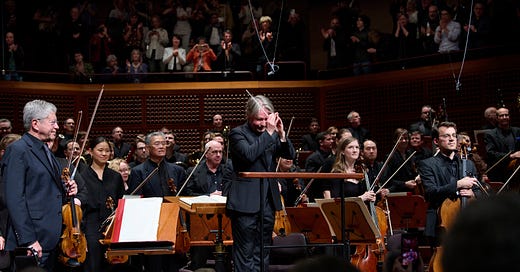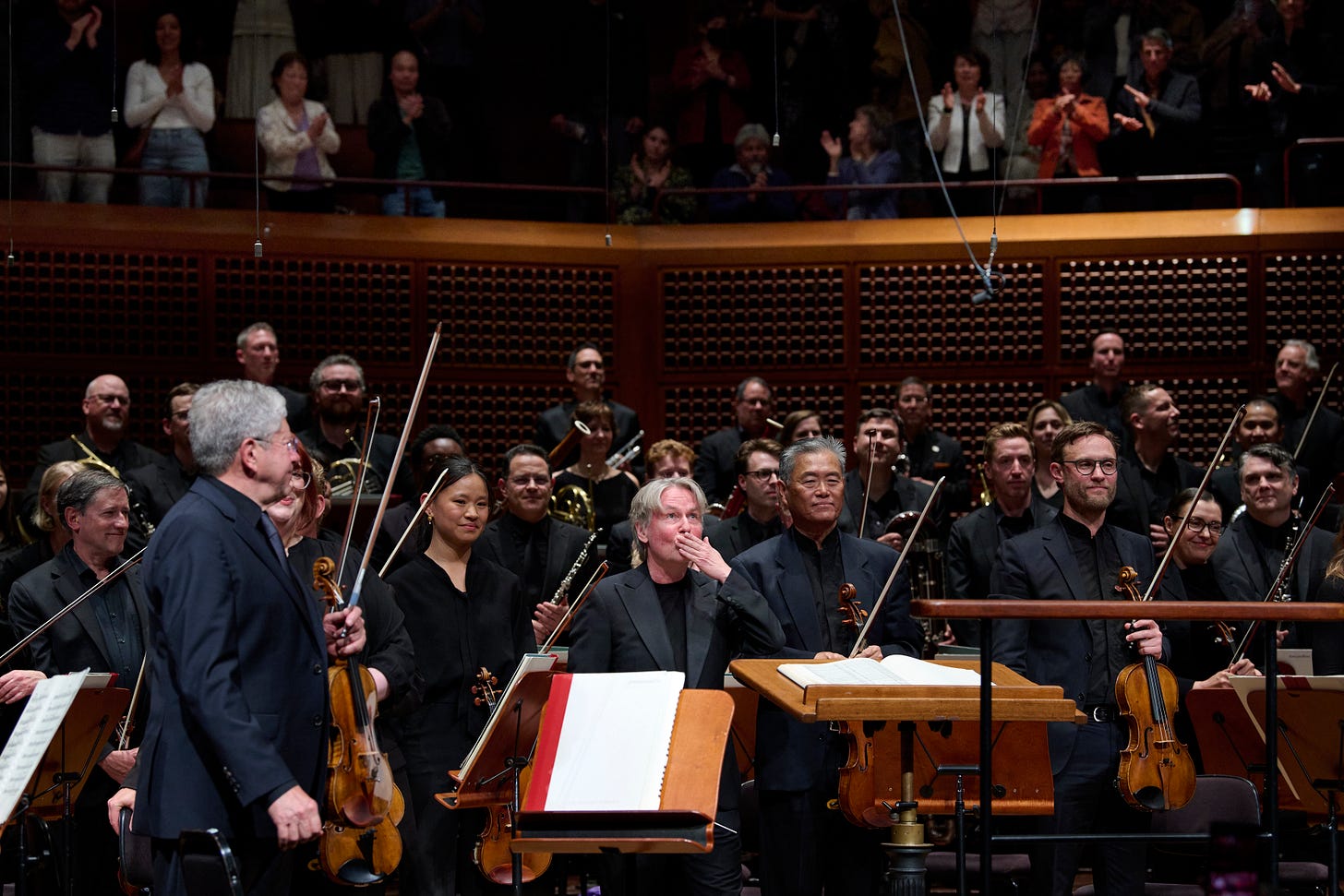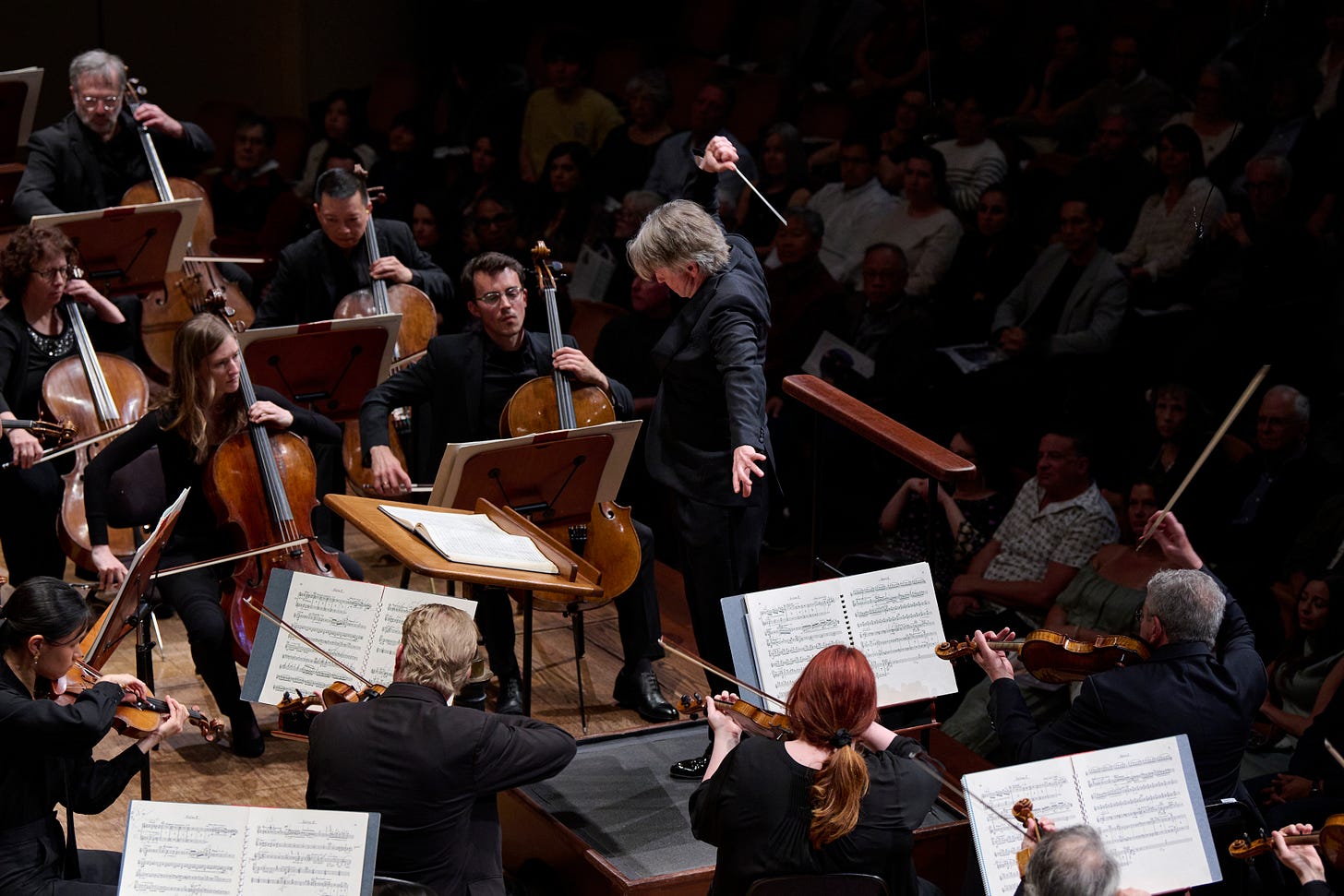The beginning of the end
A superb rendition of Stravinsky's "Firebird" began the final chapter of Esa-Pekka Salonen's San Francisco tenure

The San Francisco Symphony’s program last week resonated far beyond the specifics of the concerts themselves. There was nothing particularly striking about the programming, at least on paper — a pair of standards by Berg and Stravinsky, together with the Symphony premiere of a brief curtain-raiser by Magnus Lindberg.
But the audience for Saturday’s concert understood all too well that we were witnessing the final phase of a particularly significant turning point in Davies Symphony Hall. This program was the first of Esa-Pekka Salonen’s four final weeks as the orchestra’s music director, after which he will shake the dust of San Francisco off his feet and go on to the next stage of his career. He has no plans to return next season. Only a fool predicts the future with any pretense of certainty, but I would not be surprised if Salonen wound up never conducting here again.
So the real theme of the program was This is what we had, and this is what we’ve lost. (One audience member greeted me at intermission with something close to these exact words.) Onstage leadership of an extraordinary caliber, from a conductor able to infuse even familiar works with color and drama and narrative shape — that’s not something you let slip away. Except they did.
The sense of sorrow and impending loss hit hardest after intermission, with a vibrant but subtly shaped performance of The Firebird, the first of Stravinsky’s pathbreaking Russian ballets. This is music of vivid theatrical effect, full of instrumental color and little narrative coups, and some conductors — Michael Tilson Thomas among them — like to play up the splashiness of Stravinsky’s early esthetic. Salonen, though, adopts a more nuanced view. He blends the sections of the orchestra in a sort of water-color palette. He sneaks up on the score’s sudden narrative shifts with a deceptively casual insouciance, springing the trap so that it’s only afterward that you think, “Wait, what?” There are fewer individual thrills this way, but a greater and more lasting cumulative effect; by the time the orchestra erupted into the score’s final celebratory strains, the audience knew we had been on a splendid and aptly magical journey.
If Salonen’s abrupt departure inspires a sense of we hardly knew ye, there’s no mistaking that he has left the orchestra in even better shape than he found it, and that’s a development that should be with us for a long time. The Firebird served as a showcase for some of the prominent additions to the Symphony’s roster — principal cellist Rainer Eudeikis, harpist Katherine Siochi, principal flutist Yubeen Kim, and most recently principal bassoonist Joshua Elmore — and all of them rose to the occasion with playing of sparkling eloquence. Amid the worries about the direction the organization’s leadership seems to be headed, we can at least feel optimistic about the state of the orchestra itself.
In addition to the Stravinsky, Saturday’s program also included an oddly wan rendition of Berg’s Violin Concerto, with the German violinist Isabelle Faust as soloist. Faust hasn’t been heard in these parts since 2014, when she made a weak Symphony debut in Britten’s Violin Concerto. Her performance in the Berg was in a similar vein, marked by a thin, sometimes barely audible string tone and a general lack of expressivity in one of the most directly personal concertos in the repertoire. There was scarcely a moment in the piece when the orchestra didn’t prove more rewarding to listen to.
It probably didn’t help that she was following the potent force of Lindberg’s Chorale, written in 2002 as a companion piece to the concerto. Lindberg takes the Bach chorale Es ist genug (“It is enough”), which is the basis for Berg’s last movement, and recasts it in the form of a classic film noir sound track, as if Max Steiner or Miklós Rózsa had been contracted to conjure up the rain-splashed mean streets of 18th-century Leipzig. (“The minute that dame walked into the organ loft of the Thomaskirche I knew she spelled trouble.”) It's a wonderfully dense and shadowy creation, and Salonen and the orchestra delivered it flawlessly.
Elsewhere:
Michael Zwiebach, San Francisco Chronicle/SFCV: “On Friday, these extended scenes [in the Stravinsky] crackled with energy and purpose, driven by Salonen’s vivid dramatic imagination. The performance brilliantly elucidated the work’s overall structure, with the conductor masterfully restraining even the fully orchestrated moments.”
Cryptic clue of the week
From Out of Left Field #269 by Henri Picciotto and me, sent to subscribers last Thursday:
Enamored of small winter accessory (7)
Last week’s clue:
Bum lies about my degree in military facility (4,4)
Solution: ARMY BASE
Bum: ARSE
lies about: contains
my: MY
degree: BA
military facility: definition
Coming up
• Harvey Milk Reimagined: Stewart Wallace and Michael Korie’s opera about the martyred gay rights icon, which had its local premiere in 1996 at the San Francisco Opera, has undergone a major overhaul. Opera Parallèle’s new version, slimmed down from three acts to two, premiered at Opera Theatre of St Louis in 2022 and now comes home to the Bay Area, with baritone Michael Kelly in the title role. May 31-June 6, Yerba Buena Center for the Arts. www.operaparallele.org.
• Marin Symphony: As the orchestra continues its search for a music director to succeed longtime stalwart Alasdair Neale, it welcomes the Bay Area’s Brad Hogarth as the last of four finalists to guest-conduct this season. Hogarth’s program includes music by Handel, Ravel, and Stravinsky, as well as Prokofiev’s First Violin Concerto with concertmaster Ani Bukujian as soloist. May 31-June 1, College of Marin, James Dunn Theatre, Kentfield. www.marinsymphony.org.






Yes and no regarding this:
"If Salonen’s abrupt departure inspires a sense of we hardly knew ye, there’s no mistaking that he has left the orchestra in even better shape than he found it, and that’s a development that should be with us for a long time."
I agree completely about the players you mention who were hired by Salonen. But the horn section is still down to two regular members, two season substitutes, floating guests, and no new hires.
In addition, associate principal trombone Nicholas Platoff has been at Houston for a trial year as principal and evidently is staying; principal trombone Timothy Higgins won the Chicago principal trombone audition; Christopher Bassett won the St. Louis bass trombone audition. I understand that Bassett's wife is a violinist there, and given the difficulty of solutions to the two-body problem for orchestra musicians.....